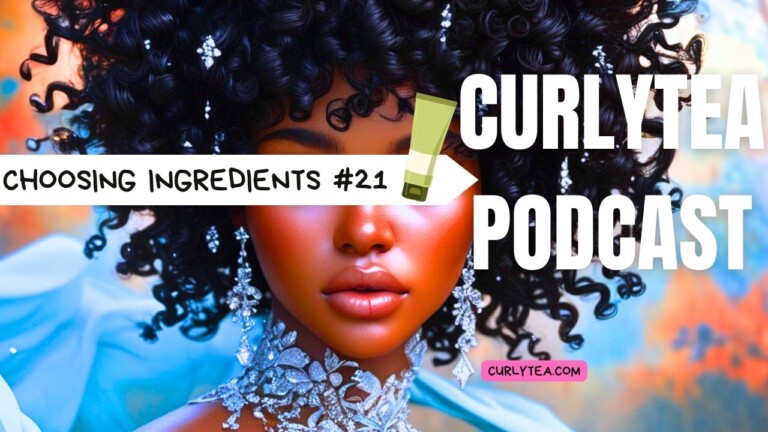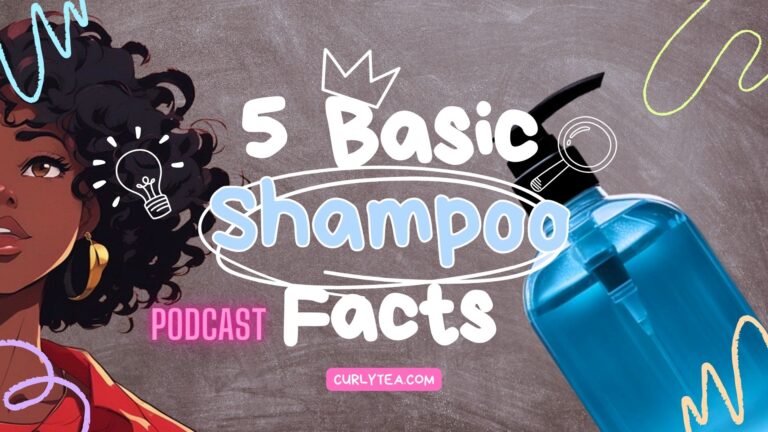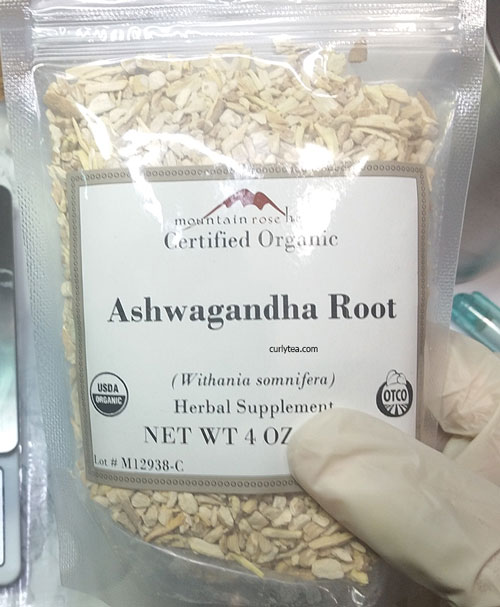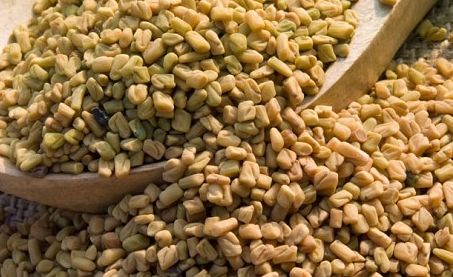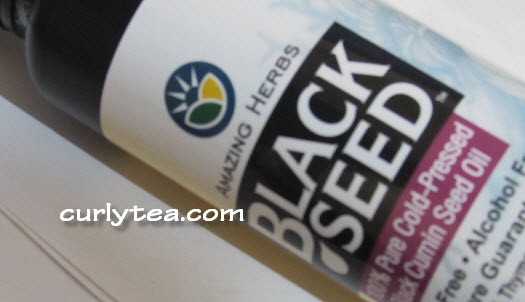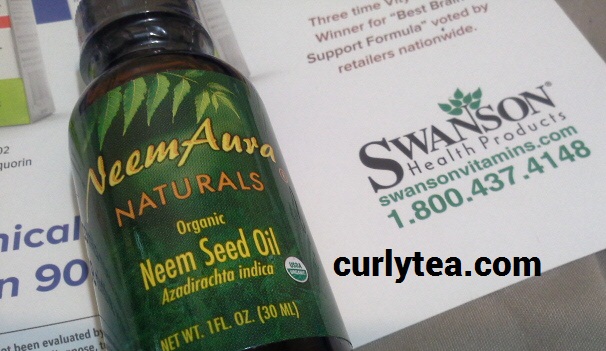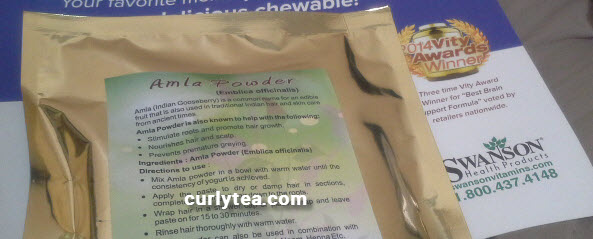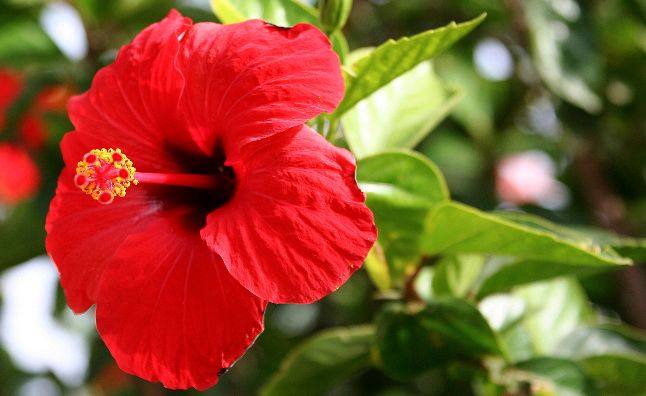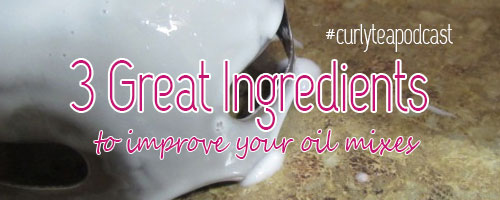
There are 3 ingredients I have been adding to my most recent hair oil mixes which has upped its usability. These ingredients are little extras which help to improve the feel and decrease the time it takes for the oil to absorb.
1. Caprylic Capric Triglycerides(CCT)
Caprylic Capric Triglycerides is becoming a powerhouse ingredient for both my diy mixes and my hair/body oils. It helps oils penetrate the surface of the skin and hair, according to truthinaging.com. That’s certain been my experience as well.
What I like most about CCT is that it cuts the super-greasy after-feel often left when I use a regular oil on my skin. You guys know this feeling if you use oils after showers/bath.
CCT allows you to customize the oiliness of your oil mixes. Add a little CCT to take the oily feeling down a notch. Add more to take the oily after-feel all the way down and increase absorption speed.
CCT seems to make the oils take less time penetrating the surface of the skin or being absorbed by the hair/scalp.
Podcast
TOPIC 1 – 3 Ingredients to Improve your Oil mixes
TOPIC 2 – Does doing natural hair have to take a long time?
CCT is used as an emollient in the same way vegetable based oils are used. However, what I noticed first about CCT is it doesn’t feel like a regular vegetable-based oil, or even a lite oil. It’s in another category all together. In addition to cutting the greasy after-feel, it adds a silky feeling to my oil mixes.
To get technical, CCT is the “esterification” of Coconut oil using only the “caprylic and capric fatty acids” (ingredientstodiefor.com)
NOTE: CCT is NOT the same as Fractionated Coconut oil. According to ingredientstodiefor.com, some suppliers have mistakenly sold Fractioned Coconut oil as Caprylic Capric Triglycerides. Fractionated Coconut oil is the “distillation of Coconut oil” which is not the same as CCT.
Caprylic Capric Triglycerides is also a great replacement for oils when you want to make an oil-free moisturizer for those with super oily skin.
For example, if you see a skin cream recipe like this:
70% Aloe Vera Juice
10% Coconut oil
9% Kukui Nut oil
4% Rosehip seed oil
6% Olivem 1000 (emulsifier)
1% Preservative
…and you know your face is oily and won’t handle that high a percentage of oils well, you can customize the recipe to your needs. You can substitute 1, some, or all of the oils with Caprylic Capric Triglycerides.
Meaning, the recipe for your oily skin would look something like this:
70% Aloe Vera Juice
10% Caprylic Capric Triglycerides
9% Kukui Nut oil
4% Rosehip seed oil
6% Olivem 1000 (emulsifier)
1% Preservative
…or like this:
70% Aloe Vera Juice
20% Caprylic Capric Triglycerides
3% Rosehip seed oil
6% Olivem 1000 (emulsifier)
1% Preservative
… or even like this:
70% Aloe Vera Juice
23% Caprylic Capric Triglycerides
6% Olivem 1000 (emulsifier)
1% Preservative
Other uses for Caprylic Capric Triglycerides include using it as a dispersing agent and pigment wetter for other ingredients (like allantoin, MSM, Vegemoist, etc), although I tend to use another ingredient called NatureSilk for that.
And to top it off, it is super-stable. It reportedly has an indefinite shelf-life. Because of that, it’s found quite often in all kinds of products from lipsticks and sunscreens, to conditioners and skin creams.
You can use it in all the conditioner recipes here are curlytea.com in place of any oils you don’t have. Just note it will absorb quicker and may leave less of a substantial feel on your curls.
It used to be the 2nd ingredient in the OLD formula of TRESemme Naturals before Unilever bought it. It’s normally in the top 5 ingredients of Avalon Organics conditioners and Hugo Naturals conditioners.
2. Olive Squalane
Olive Squalane is made from Olives, as you can tell. It is a regenerative ingredient in that it is said to help heal chapped, cracked skin by boosting cell regeneration. I use Olive Squalane as part of my current hair/skin oil mixes.
It’s said to be incredibly good at penetrating the skin and helping to heal and prevent certain forms of damage to it. Like Caprylic Capric Triglycerides, it is super-stable and helps delay oxidation and rancidity.
Olive Squalane is also said to “carry” ingredients down into the deeper tissues of the skin. In other words, other ingredients can piggy-back on Olive Squalane to get to the deeper layers of the skin.
Imagine it as an ingredient in a skin treatment oil made from Sea Buckthorn oil, Black seed oil, Neem oil, Baobab oil, Tamanu oil and Caprylic Capric Triglycerides! My current mix includes almost everything above and more (with the exception of Sea Buckthorn oil).
To get technical, Olive Squalane is what they call a “botanical lipid” which is close to human lipids in structure.
What puts some people off from Olive Squalane is the price. It’s even more expensive than a high quality oil. 16 ounces can be upwards of $50 or more.
When you want to make a penetrating deep conditioner, this would be a good ingredient to use… if it weren’t sooo expensive (to me anyway)!
Needless to say, I don’t do a lot of experimentation with this ingredient because it’s so expensive. I usually only add drops (10-30) of it in my oil mixes.
3. Vitamin E MT-50
My lovely Vitamin E MT-50! This isn’t regular Vitamin E. The “MT” stands for “mixed tocopherols”. The 50 denotes the 50% active blend of natural tocopherols (d-alpha, d-beta, d-gamma and d-delta).
Vitamin E MT-50 helps to stave off oxidation and rancidity of your oils, which naturally helps to extend the shelf-life of your mixes. According to IngredientsToDieFor.com, the gamma tocopherol provides the highest anti-oxidant activity and protection.
In addition, it only takes a very small amount of Vitamin E MT-50 to do what it’s supposed to do. As little as 0.02% can extend the shelf-life of your oils by 6 months (ingredientstodiefor.com) Recommended usage rate is from 0.02% – 1%.
I definitely add Vitamin E MT-50 to my hair/body oil mixes to make sure I get both the benefits of Vitamin E along with the comfort of not having to worry about the oil mix going rancid before I can use it all up.
Use Vitamin E MT-50 in everything from oil mixes and salves, to hair and skin creams. Remember, a little goes a long way.
Let’s say you wanted to make a body oil mix. It could look something like this:
30% Sweet Almond Oil
20% Shea oil
24% Sunflower oil
5% Caprylic Capric Triglycerides
10% Baobab oil
10% Kukui Nut oil
0.5% Vitamin E MT-50
0.5% Olive Squalane
And a hair oil mix may look something like this:
30% Sweet Almond oil
20% Coconut oil
24% Sesame oil
10% Caprylic Capric Triglycerides
10% Avocado oil
5% Castor Oil
1% Vitamin E MT-50
Notice the different oil choices depending on the usage of the oil. However, it would be okay to use either combination of oils for either purpose. It’s just that some oils seem to show more benefit for the hair or body depending which oil you’re using.
For example, Shea oil fits both hair and skin very well. Sunflower oil’s benefits can be felt almost immediately on the skin. But it may not be as evident on the hair.
Conversely, Coconut, Avocado and Castor oils are excellent for softening and protecting the hair and their benefits are quite evident. But they may feel a oily on the skin (without the use of Caprylic Capric Triglycerides)
Castor oil in particular — depending on what grade of oil you get and the supplier — may actually feel a bit sticky or may sit atop the skin for an extended period of time.
So take this information into account when making your oil mixes and don’t forget — if your budget allows — test out these extra ingredients and see if they’ll add extra UMPH to your oil mixes.
And no, you don’t have to use them all at the same time! You don’t even have to add all three to a single mix. Test out a version of your oil mix with Caprylic Capric Triglycerides. Then maybe when you make it again, test out your mix with a little Olive Squalane and see if you notice a difference. Etc. Etc. If you can, always try to use Vitamin E MT-50 to help the skin and improve the shelf-life of your oils.
Related
http://www.ingredientstodiefor.com/item/Caprylic_Capric_Triglycerides/464
https://www.truthinaging.com/ingredients/capryliccapric-triglycerides
https://www.curlytea.com/curlblog/reviews/review-tresemme-naturals-old-formula.html
http://www.ingredientstodiefor.com/item/Olive_Squalane/129
http://www.lotioncrafter.com/mixed-tocopherols-t50-natural-vitamin-e.html
http://www.ingredientstodiefor.com/item/Vitamin_E_MT_50_FCC_USP/627
=======
MUSIC
=======
MUSIC
artist: grapes
song: another one
http://ccmixter.org/files/grapes/19168
http://creativecommons.org/licenses/by/3.0/
artist: jahzzar
song: chiado
https://freemusicarchive.org/music/Jahzzar/Paris_Lisboa/Chiado
http://creativecommons.org/licenses/by-sa/3.0/
artist: rocavaco
song: Just Sway
http://ccmixter.org/files/rocavaco/32217
http://creativecommons.org/licenses/by/3.0/
 CURLYTEA
CURLYTEA

